
Thursday, 26 September 202408:00 | Conference Registration, Materials Pick-Up, Continental Breakfast in the Exhibit Hall (St. Charles Ballroom) | |
Session Title: Conference Opening Session - Technologies, Trends and Current Landscape for Diagnostics - Autumn 2024 |
| | |
Venue: Fleur De Lis Ballroom |
| | 09:00 |  | Conference Chair Welcome and Introduction by Conference Chairperson
Steve Soper, Foundation Distinguished Professor, Director, Center of BioModular Multi-Scale System for Precision Medicine, The University of Kansas, United States of America
|
| 09:15 | 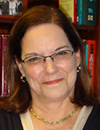 | Plenary Presentation Using Exosomes to Diagnose and Treat Chronic Neurodegeneration
Lynn Pulliam, Professor of Laboratory Medicine and Medicine, University of California San Francisco, United States of America
Diagnosing neurocognitive disorders has been challenging and doing so without invasive and expensive procedures even more difficult. My lab has been interested in diagnosing chronic cognitive impairment in HIV infection and more recently longCOVID using neuronal-derived exosomes. The goal is to identify liquid biomarkers associated with cognitive impairment and follow these during and after treatment. In addition, studies may identify common and distinct processes in neurodegeneration that may help in drug interventions. Alternatively, exosomes can be used as therapeutic delivery vehicles. Implementing these strategies in the clinical laboratory is the goal and still a challenge. |
| 10:00 | 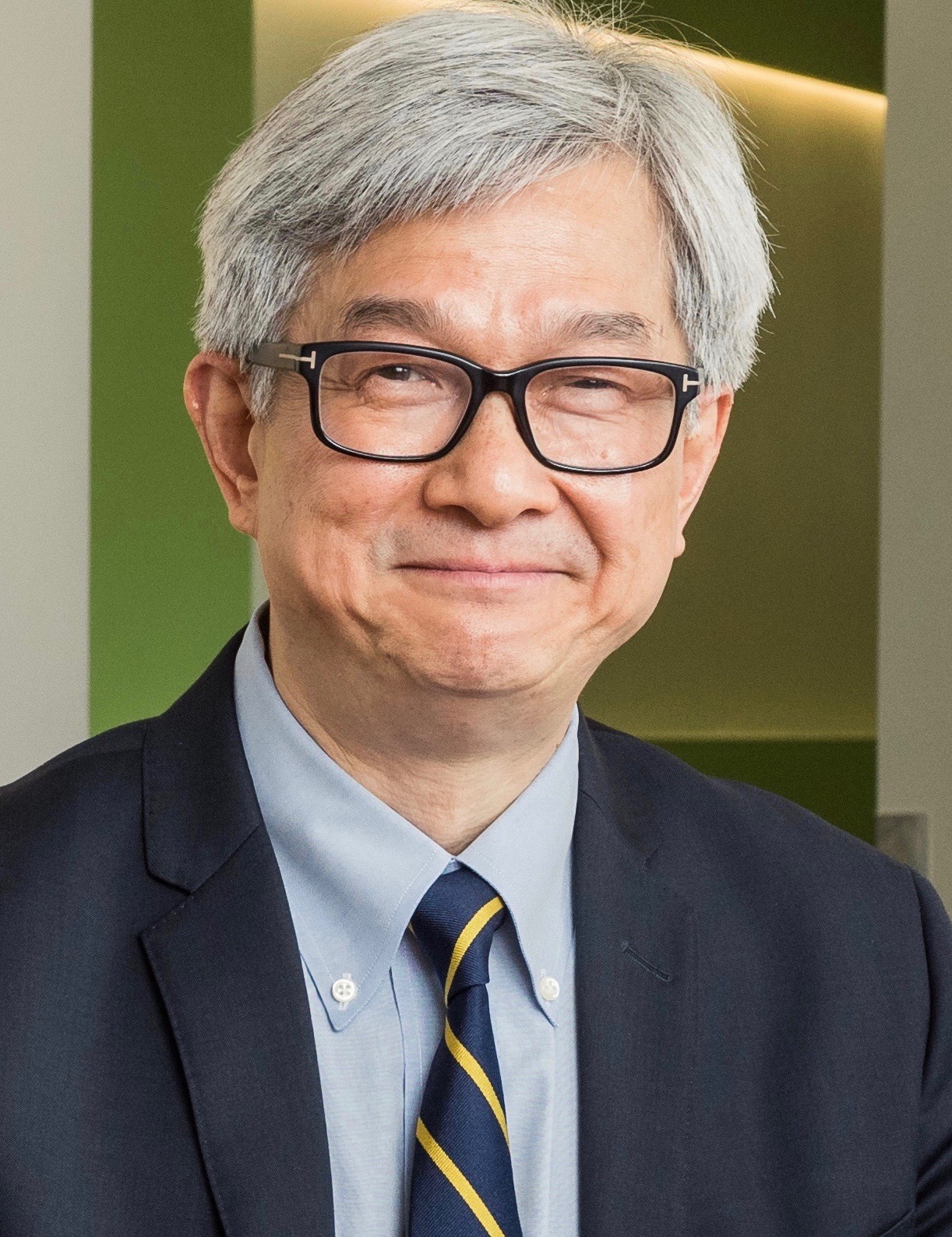 | Keynote Presentation Saliva EFIRM Liquid Biopsy
David Wong, Felix and Mildred Yip Endowed Chair in Dentistry; Director for UCLA Center for Oral/Head & Neck Oncology Research, University of California-Los Angeles, United States of America
Circulating free DNA (ctDNA) liquid biopsy is rapidly emerging to address the unmet clinical need to detect signature mutations in human cancer based on cell-free circulating tumor DNA (ctDNA) as a surrogate for the tumor genome. The detection of ctDNA via liquid biopsy will facilitate analysis of tumor genomics needed for early detection, molecular targeted therapy, treatment monitoring, onset of acquired resistance mutations, recurrence and minimal residual diseases. Currently, most liquid biopsy approaches are plasma-based using PCR and/or next generation sequencing (NGS) with performance concordance in the 60-70% range compared with biopsy-based genotyping. The exciting horizon ctDNA liquid biopsy is hampered by low copy number of ctDNA, volume requirement for assays and sensitivity of detection platform. Saliva is a bodily fluid that we produce ~600ml per day and harbors multiple omics constituents, including ctDNA that can be harnessed non-invasive for personalized and precision medicine applications, is ideal for ctDNA liquid biopsy. Yet conventional PCR-based technologies cannot detect ctDNA in saliva samples whereas an emerging liquid biopsy platform “Electric Field Induced Release and Measurement (EFIRM)” consistently detect ctDNA from NSCLC patients with actionable mutations in plasma and saliva with concordance of 95%+ with tissue/biopsy-based genotyping including early-stage lesions. EFIRM provides the most accurate targeted detection that can assist clinical treatment decisions for non-small cell lung cancer (NSCLC), with tyrosine kinase inhibitors (TKI) that can extend the disease progress free survival period of these patients. The mechanism of EFIRM for ctDNA detection was recently revealed to detect ctDNA that are ~45 bp single-stranded ctDNA we termed ultra-short ctDNA (usctDNA), whereas the conventional ctDNA are mononucleosomal that are ~160 bp and double-stranded. Conventional ddPCR or NGS cannot detect usctDNAs, where a minimum of 78-bp is needed for amplification. Custom design of ddPCR assay to quantify the EGFR L858R usctDNA in saliva of NSCLC patients revealed that the usctDNA is present at high abundance, mean= 62,636; SD ± 63,334, range: 16,500 to 56,375 copies per mL of saliva, permitting its detection in small saliva volume of 50uL or less, directly without sample processing. These results led to the conclusion that there is an emerging landscape of usctDNA that is present at much higher stoichiometry than mononucleosomal ctDNA permitting detection by the EFIRM technology in micro-litter volume of saliva samples, directly without processing, presenting a new frontier for ctDNA liquid biopsy, addressing the low copy number and limit of detection bottleneck of mnctDNA liquid biopsy. |
| 10:30 | Mid-Morning Coffee and Networking with the Exhibitors | 11:00 | 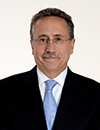 | Keynote Presentation Title to be Confirmed.
Andrew Godwin, Professor and Division Director, Genomic Diagnostics, Founding Director, Kansas Institute for Precision Medicine, Deputy Director, KU Cancer Center, University of Kansas Medical Center, United States of America
|
| 11:30 |  | Keynote Presentation Plasma Extracellular Vesicles in Cardiovascular Disease
Dominique PV de Kleijn, Professor Experimental Vascular Surgery, Professor Netherlands Heart Institute, University Medical Center Utrecht, The Netherlands, Netherlands
Cardiovascular Disease (CVD) is with Ischemic Heart Disease and Stroke, the number 1 and 2 cause of death in the world and expect to increase especially in Asia.
Ischemic heart disease (IHD) comprises 2 entities: Chronic Coronary Syndrome (CCS) and Acute Coronary Syndrome (ACS). CCS is associated with 6-8 times increased risk of myocardial infarction and death. Chest pain is the symptom of patients that are suspected of CCS. But chestpain is very common (500.000 patients in NL/year) and only 10% have CCS. Since blood markers for CCS do not exist, this results in that 80-90% of chest pain patients that do not have CCS undergoing costly imaging. To reduce costs and make this diagnostic track much more efficient, we use plasma extracellular vesicle protein content of vesicles from plasma subfractions as an accurate source for exclusion of CCS. Using automated plasma EV fraction analysis and CD9 as an internal marker, but now also a microfluidics chip, we hope to establish a plasma EV test that will reduce unnecessary chestpain patient referral and therefore costs. |
| 12:00 | Particle Metrix Technolology Spotlight Presentation | 12:30 | Networking Buffet Lunch -- Network with Exhibitors and View Posters | |
Session Title: Circulating Biomarkers and Technologies for Interrogation |
| | |
Venue: Fleur De Lis Ballroom |
| | 14:00 | 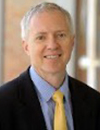 | Keynote Presentation Rapid and Ultrasensitive Point of Care Digital Resolution Diagnostics using Nucleic Acid Engineering and Photonic Crystals
Brian Cunningham, Professor and Intel Alumni Endowed Chair, University of Illinois at Urbana-Champaign, United States of America
Detection of viral pathogens and circulating nucleic acid biomarkers typically relies upon enzymatic amplification of a targeted nucleic acid sequence using laboratory-based methods that require complex workflows and expensive equipment. Translating diagnostic tests from the laboratory toward point-of-care environments is a key towards increasing the efficiency of the healthcare system while improving outcomes for people with a variety of health inequities. This presentation will describe efforts at the Center for Genomic Diagnostics at the University of Illinois to develop technology platforms and assay methods intended to overcome the inherent limitations of laboratory-based nucleic acid testing for viral pathogens and circulating nucleic acid cancer biomarkers, representing collaborations between engineers, chemists, biologists, and clinicians. We utilize Photonic Crystal (PC) nanostructured surfaces to amplify the interaction between light and biological materials, to enable digital resolution, single unit detection of molecules and viruses without sample partitioning (as in droplet digital PCR), enzymatic amplification, or thermal cycles. Amplification of fluorescence, scattering, and absorption by the PC enables utilization of simple and inexpensive detection instruments. The PC biosensor technology operates in concert with precisely designed target-selective nanostructures built from DNA. Using nets and hand-like nano-grippers comprised of self-assembled DNA, intact viruses can be selectively recognized, captured, and linked to a biosensor for digital counting. We have also adapted the CRISPR/Cas technology towards a rapid, highly selective assay for detection of circulating tumor DNA. Our approach does not require PCR pre-amplification due to the use of PC biosensors, engineered nucleic acid tethers, and gold nanoparticle tags. The presentation will share recent results and a vision towards approaches that can be adapted for clinics and specialty physician offices. |
| 14:30 | 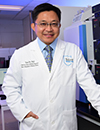 | Keynote Presentation EV-based Omics Analysis Enabling Personalized Diagnosis
Tony Hu, Professor and Weatherhead Presidential Chair, Tulane University School of Medicine, United States of America
Diagnostics for infectious and malignant diseases often exhibit poor specificity/sensitivity, hindering early detection and treatment evaluation, but development of improved assays is limited by several challenges, including absence of disease-specific factors, low biomarker concentrations, and interfering factors. We have employed an array of sensitive analytic technology platforms to identify key host-pathogen interactions that influence pathogenesis and applies this information to identify diagnostic and predictive biomarkers that can be applied for personalized medicine to improve patient outcomes. We reported the development and validation of several nanotechnoloy-based assays platforms that can be used to quantify protein and nucleic acid changes in EV-associated protein biomarkers, and which have the capacity to target EVs derived from specific cell populations, including EVs derived from Mtb-infected phagocytes and other cell populations involved in granuloma formation. Candidate biomarkers identified will be analyzed using these platforms and correlated with changes in specific granuloma and systemic cell populations. |
| 15:00 |  | Keynote Presentation New Fluorescent Reagents to Enable Highly Multiplexed Cellular Measurements
Daniel Chiu, A. Bruce Montgomery Professor of Chemistry, University of Washington, United States of America
Fluorescence based techniques have become an indispensible tool kit in both basic cellular studies and in vitro diagnostics. However, the intrinsic limitations of conventional dyes, such as short Stoke’s shift and low absorptivity, have posed difficulties for advancing highly multiplexed assays. We have developed a new class of fluorescent probes called Pdots, and this talk will highlight their development and performance to enable highly multiplexed fluorescence measurements in diagnostics. |
| 15:30 | Mid-Afternoon Coffee Break and Networking with the Exhibitors | 16:00 | 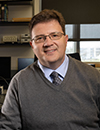 | Keynote Presentation Plasmonic Nanopore Sensing with Multi-Frequency Burst and Continuous AC Modulation
George Alexandrakis, Professor, Bioengineering Department, University of Texas at Arlington, United States of America
The use of plasmonic nanopores for single molecule detection has attracted considerable attention due to their high sensitivity and selectivity. I will present my group’s work on a phase analysis approach for characterizing the trapping of single molecules in a plasmonic nanopore using trains of multi-frequency AC bursts or continuous AC modulation. By analyzing the phase response of the plasmonic nanopore at select frequencies, we can differentiate between a test ligand, the antibody targeting this ligand, and the complexes that these ligands form, as well as observe their dynamics while inside the optical trap of the plasmonic nanopore. This work shows the feasibility of these two new approaches for rapid and accurate identification of single molecules in complex mixtures. |
| 16:30 | NanoFCM Technology Spotlight Presentation | 17:00 |  | Keynote Presentation New Insights on Ovarian Cancer Biomarker CA125
Rebecca Whelan, Associate Professor of Chemistry, University of Kansas, United States of America
There is an unmet need for innovative molecular tools that can assist in the clinical management of high-grade serous ovarian cancer. Improving the performance of validated biomarkers by reinventing their detection strategy is a compelling and underused approach to meet this need. The serum marker CA125 plays a crucial role in the clinical management of ovarian cancer, but, despite its importance, important questions remain regarding its molecular structure and role in cancer progression. Through a combination of long-read sequencing, bottom-up proteomics, AI-guided molecular structure prediction, and mutation analysis, the Whelan lab has recently developed a new model for the ovarian cancer biomarker CA125. This model will be described. The nature of the CA125 assay may contribute to ongoing disparities in ovarian cancer survivorship. Importantly, serum CA125 levels in Black women have been shown to be lower than levels in white women, but the molecular-level reasons for these racial differences are unknown. Current tests and algorithms employ a single CA125 cut-off value and do not consider racial/ethnic difference, which may contribute to the fact that Black ovarian cancer patients are diagnosed at later stage than white patients with concomitantly poorer clinical outcomes. Through targeted proteomics and long-read sequencing, the Whelan lab is investigating the racial differences in serum CA125 levels. Preliminary results on this project will be presented. |
| 17:30 | 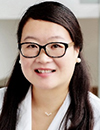 | Keynote Presentation Circulating Extracellular Vesicle-enabled Cancer Biomarker Discovery and Diagnosis
Mei He, Associate Professor, University of Florida, United States of America
Extracellular vesicles (EVs) have gained significant attention in the field of extracellular communication, holding promise as intercellular messengers and diagnostic biomarkers. However, the challenges in isolating and purifying EVs from complex biological samples have hindered their widespread utility. This study presents a novel EV isolation standardization strategy leveraging bioinformatics. A data science-driven statistical metric integrating multiple characterizations was applied to enable direct comparisons between different isolation methods. Utilizing pHLIP-magnetic bead approach, we are able to achieve efficient EV isolation and quality characterization for omic sequencing discovery of new biomarkers specific to cancer diagnosis. |
| 18:00 | Enjoy a Delightful Evening Networking Reception in the Hilton Hotel Executive Lounge with Comfortable Seating, Board Games, Beers and New Orleans Appetizers | 19:30 | Close of Networking Reception and Day 1 Conference Programming |
Friday, 27 September 202408:00 | Morning Coffee and Continental Breakfast in the Exhibit Hall (St. Charles Ballroom) | |
Session Title: New Technologies and Platforms for Diagnostics -- circa 2024 |
| | |
Venue: Fleur De Lis Ballroom |
| | 09:00 |  | Keynote Presentation Mechanical Single-Cell Heterogeneity
Lydia Sohn, Almy C. Maynard and Agnes Offield Maynard Chair in Mechanical Engineering, University of California-Berkeley, United States of America
|
| 09:30 | 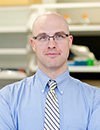 | Keynote Presentation Title to be Confirmed
Adam Hall, Associate Professor of Biomedical Engineering, Wake Forest School of Medicine, United States of America
|
| 10:00 | Title to be Confirmed.
Hyungsoon Im, Associate Professor, Center for Systems Biology, Mass General Hospital (MGH)/Harvard Medical School, United States of America
| 10:30 | Mid-Morning Coffee Break -- Network with Exhibitors and View Posters | 11:00 |  | Keynote Presentation Title to be Confirmed.
John McDevitt, Chair, Department Biomaterials, New York University College of Dentistry Bioengineering Institute, United States of America
|
| 11:30 | 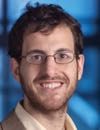 | Keynote Presentation Diagnosing Disease on a Microchip: Finding Nanoscale Needles in Messy Nanoscale Haystacks
David Issadore, Professor, University of Pennsylvania, United States of America
The transformative growth in microelectronics in the latter half of the 20th century was fueled fundamentally by the ability to miniaturize complex circuits onto chips. The impact of this has been profound– computing is pervasive and portable and communication is instant and global. My research aims to harness this same engineering approach to solve high impact problems in medical diagnostics. To accomplish this goal my lab develops hybrid microchips, where microfluidics are built directly on top of semiconductor chips. In this talk I will focus on recent work at Penn on 'digital asays.' Digital assays — in which ultra-sensitive molecular measurements are made by performing millions of parallel experiments in picoliter droplets — have generated enormous enthusiasm due to their single molecule resolution. These assays have incredible untapped potential for disease diagnostics but are currently confined to laboratory settings due to the instrumentation necessary to generate, control, and measure tens of millions of droplets. To overcome this challenge, we are developing a hybrid microelectronic / microfluidic chip to ‘unlock’ droplet-based assays for mobile use. Our microDroplet Megascale Detector (µMD) takes inspiration from cellular networks, in which phones are identified by their carrier frequency and not their particular location. In collaboration with physicians at The Abramson Cancer Center, we are demonstrating the power of this approach by developing a multiplexed extracellular vesicle-based diagnostic for the early detection of pancreatic cancer. I will also discuss ongoing projects on the early diagnosis of lung cancer, treatment guidance for traumatic brain injury, and the differential diagnosis of Alzheimer's versus Lewy body dementia. |
| 12:00 | Networking Buffet Lunch. Network with Exhibitors and View Posters. | 14:00 | Poster Session Chaired by Professor Soper | 15:00 | Selected Presentations based on Submitted Abstracts | 16:00 | Close of Conference |
|

 Add to Calendar ▼2024-09-26 00:00:002024-09-27 00:00:00Europe/LondonEmerging Technologies for Diagnostics and Liquid Biopsies - New Orleans 2024Emerging Technologies for Diagnostics and Liquid Biopsies - New Orleans 2024 in New OrleansNew OrleansSELECTBIOenquiries@selectbiosciences.com
Add to Calendar ▼2024-09-26 00:00:002024-09-27 00:00:00Europe/LondonEmerging Technologies for Diagnostics and Liquid Biopsies - New Orleans 2024Emerging Technologies for Diagnostics and Liquid Biopsies - New Orleans 2024 in New OrleansNew OrleansSELECTBIOenquiries@selectbiosciences.com